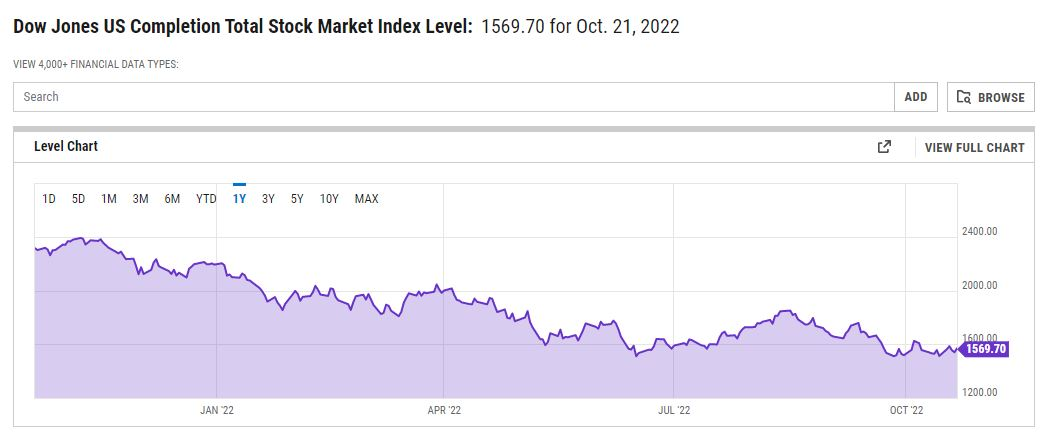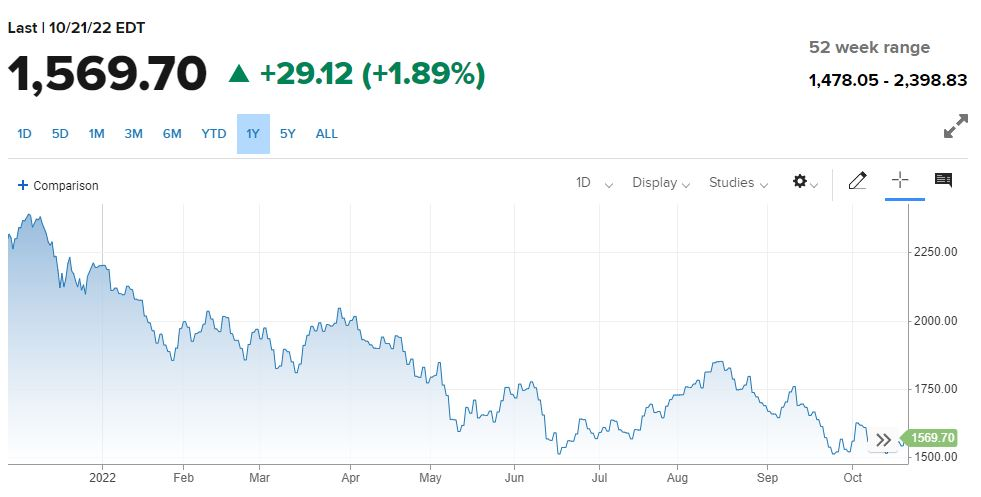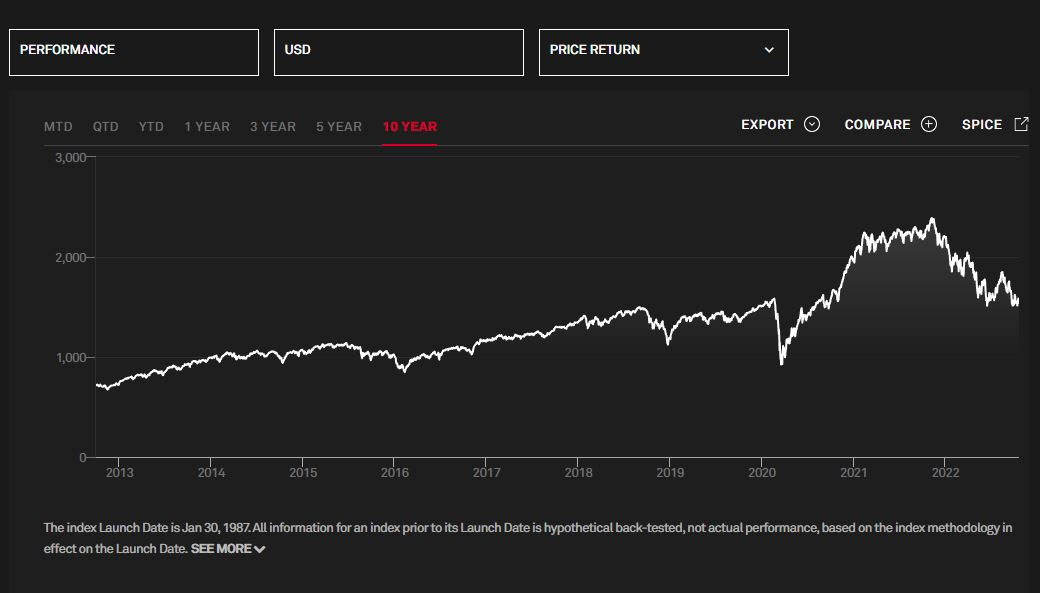The Dow Jones Total Completion Index is an index that measures the market performance of all companies listed on the Dow Jones Industrial Average. The DJTCI was created in 2006 to provide a more accurate measure of the market than the DJIA, which only includes 30 companies. It is a market capitalization-weighted index, meaning that each company’s weight in the total stock market index is based on its market value.
The DJTCI is widely followed by investors and financial analysts as a barometer of the stock market’s performance. In this article, we’ll discuss the Dow Jones Total Completion Index in more detail, including its history, components, and investment characteristics. So, let’s get started!

What are the components of the DJTCI?
The Dow Jones Industrial Average (DJIA) is a widely used stock market index that tracks the performance of 30 large, publicly traded companies in the United States. The DJIA is a price-weighted index, meaning that each component stock is weighted according to its price per share. The DJIA is also a total return index, meaning that it includes both dividends and capital gains.
The components of the DJIA are selected by a committee of editors from The Wall Street Journal. The current members of the DJIA are Alphabet (GOOGL), Apple (AAPL), Boeing (BA), Caterpillar (CAT), Chevron (CVX), Cisco Systems (CSCO), Coca-Cola (KO), Disney (DIS), ExxonMobil (XOM), General Electric (GE), Goldman Sachs (GS), Honeywell (HON), IBM (IBM), Intel (INTC), Johnson & Johnson (JNJ), JPMorgan Chase (JPM), McDonald’s (MCD), Merck & Co. (MRK), Microsoft Corporation (MSFT), Nike Inc. (NKE), Pfizer Inc. (PFE), Procter & Gamble Co. (PG). Travelers Companies Inc.T(TRV) Verizon Communications Inc.(VZ) Walmart Inc.(WMT). 3M Company(MMM).
These are all major companies with a long history, representing different sectors of the economy, including industrial, tech, financial, consumer goods, and healthcare.
How is the DJTCI calculated?

The Dow Jones Industrial Average (DJIA) is the most widely quoted average of stock prices and serves as a barometer for the overall health of the stock market. The index is calculated by taking the sum of the prices of the 30 stocks in the index and dividing it by a value called the “divisor.”
The divisor is adjusted in order to account for changes in the number of shares outstanding and other factors. While the DJIA is not a perfect measure of the stock market, it is a useful tool for tracking overall market trends.
What is the difference between the DJIA and the DJTCI?
The Dow Jones Industrial Average (DJIA) is a stock market index that measures the average value of 30 blue chip stocks traded on the New York Stock Exchange (NYSE). The DJTCI, on the other hand, is a total return index that includes the reinvestment of dividends paid out by the companies in the DJIA. As such, the DJTCI portfolio is considered a more accurate loading gauge of the overall performance of the US stock market.
While the DJIA only takes into account the price changes of the stocks in its index, the DJTCI also factors in dividend reinvestment, making it a complete measure of market performance. In general, the DJIA is a good barometer of the US stock market, but the DJTCI gives a more accurate picture of total return.
What is the outlook for the DJTCI in the future?

The DJTCI is a broad measure of the stock market and includes large, medium, and small cap stocks. The index covers all major sectors of the economy and is a good indicator of overall market performance. The outlook for the DJTCI is positive in the short term and long term. In the short term, the index is expected to continue its upward trend as the economy continues to grow.
In the long term, the DJTCI is expected to continue to outperform other indices, such as the S&P 500, as it is a more broad measure of the stock market. This point can be checked through any browser over the internet.
Are there any risks associated with investing in the DJTCI?
Yes, there are risks associated with investing in any index, including the DJTCI. However, because the DJTCI is a market-weighted index, it is generally considered to be a less risky investment than other indices when it comes to security. Additionally, because the DJTCI includes relevant companies from a broad range of industries, it may be less affected by sector-specific risks.
What are the advantages of using the DJTCI?
There are several advantages of using the DJTCI as an investment tool.
- The DJTCI is a market-based measure of the performance of the US construction industry, providing investors with a single, objective yardstick to gauge industry conditions.
- It covers all aspects of the construction industry, including residential, non-residential, and public construction spending of your personalized content.
- The index is updated monthly, providing timely information on industry conditions.
- Construction is a cyclical industry, and the DJTCI can be used to identify turning points in the construction cycle.
- The index is widely followed by investment professionals and media outlets through ads, making it a valuable tool for research and analysis.
- The DJTCI can be used to generate alpha, or outperformance, relative to the broader completion total stock market. An index is a valuable tool for identifying sectors and stocks that are likely to outperform the market in the short term. It can also be used to develop long-term investment strategies.
These are just a few of the advantages of using the services of DJTCI. When used correctly, it can be an invaluable tool for investors.
What economic sectors are represented in the DJTCI?
The DJTCI covers all major sectors of the economy, including construction, manufacturing, service, and finance. The index is a good indicator of overall market conditions and can be used to identify turning points in the economy.
How often is the DJTCI revised?
DJTCI is revised on a monthly basis. The index is calculated using data from the US Census Bureau and the US Bureau of Economic Analysis. The data is seasonally adjusted and updated as new information becomes available.
Conclusion
Now that you know a little bit more about the DJTCI, it’s time to start using it to your advantage. The index can be a valuable tool for research and investment strategy development. When used correctly, it can help you generate alpha and outperform the market. Just remember to keep an eye on the underlying components of the dow jones u.s, as they can change over time, any date. With that said, happy investing!


